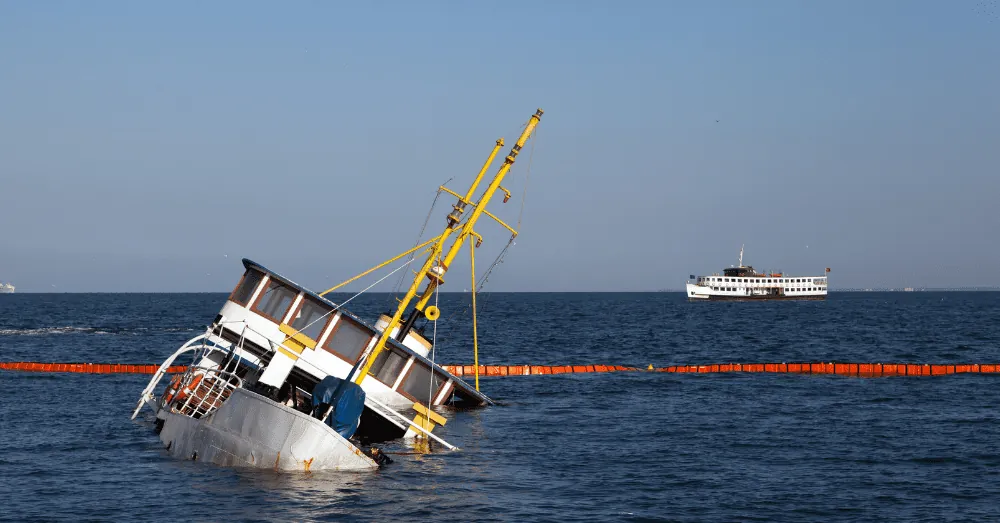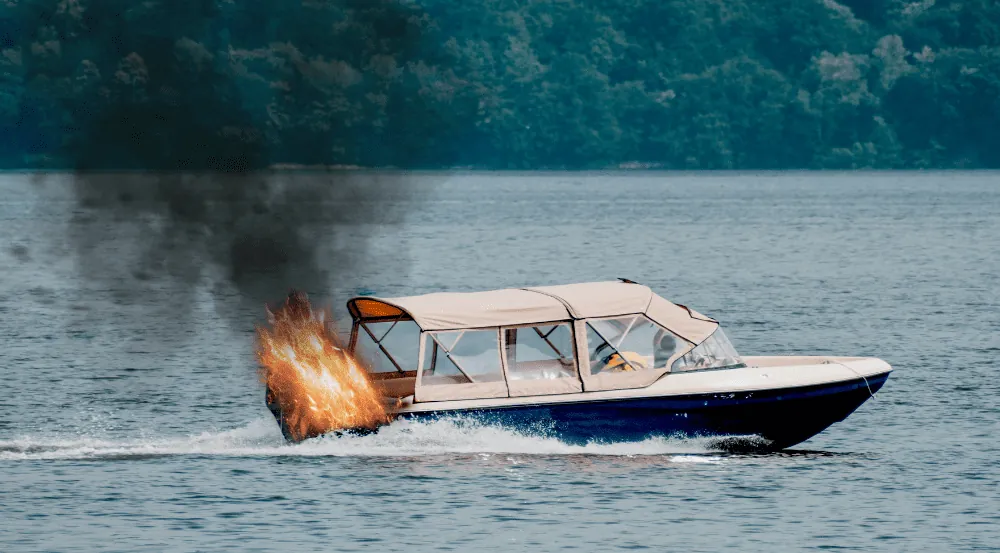
Did you know that the carbon dioxide concentration in the earth’s atmosphere was recorded as being 416 parts (per million) as of July 2021? It was the highest it had ever been in the history of humanity when it was recorded then.
For those who have been crabbing in Alaska, they’ve noticed recently that climate change is affecting crabbing.
This might make you concerned and want to have more information. Fortunately, in this article, we’ll cover the impact of climate change on crabbing in Alaska.
Finally, you can get the information you need regarding this issue so you can understand it better than ever. Read on to learn more.
Captain Mark Casto’s Experience Crabbing in Alaska
According to an article updated on April 3, 2022, written by Hal Burton for The Seattle Times, Captain Mark Casto had a problem when he was fishing for snow crabs in the Bering Sea. Aboard the boat, the Pinnacle, he looked through its wheelhouse window.
When he did, he noticed that there was a white line he could see on the horizon. It was an ice floe’s edge that the bow lights were illuminating in the darkness of the morning.
As a reaction, he throttled the engines back. Soon, this crab boat began nosing through the ice of different sizes. Some were even as large as boulders.
He had hoped that this specific part of the sea would be a place where he could catch a large number of Bering sea crabs. Earlier, he had fished some of them out.
But now, there was a risk that he might lose them in the ice that was moving fast. He decided that he and his crew would have to go elsewhere. He wondered where the ice floe had come from.
The Problem With the Seas
For decades, this Bering Sea northern area had been a place where snow crabs were in great abundance. Even 200 miles south, they could be found. However, due to changing ocean temperatures that were rising, snow crab populations went down significantly in the area just off some islands.
These were the Pribilof Islands, where just off of them there were traditional harvest areas.
This has put a historic Alaska fishery at risk. This was a fishery that, during two highly-successful boom years that occurred in the early nineties, tallied impressive hauls.
These were hauls of the crustacean that has spindly legs and green eyes. These hauls weighed over 300 million pounds. These hauls were even larger than in the king crab harvests’ highest years.
Now, a survey has come out. Alaska state biologists have said that the snow crab harvest this year has been only 5.6 million pounds. This is a 90% drop in level since 2021 levels.
More Details
Winter ice is something that the snow crab needs. When there’s winter ice, it makes it possible for algae to grow. Algae is at the food chain’s bottom. Additionally, winter ice makes it possible for cool vast pools to form at the sea’s bottom.
This provides snow crabs with a safe haven where they can escape predators that have a preference for warmer temperatures.
Climate scientists forecast that the ice over the Bering Sea will be in a retreat that’s long-term in a specific 21st-century situation.
This is a situation where greenhouse gas emissions warm the planet unevenly. These emissions are spurred by fossil fuel combustion at sea, in the air, and on land.
In the Bering Sea’s sub-Arctic and Arctic regions, temperatures are rising much faster than in farther south regions. In 2018, the winter ice in the Bering Sea was at a point that was the lowest on record.
In 2019, levels weren’t good, either. Researchers have the expectation that by the midcentury, winters such as this will be part of the norm.
The warming that has occurred in 2018 and 2019 has already been linked to changes in the sea that are wide-ranging. This is a sea that sustains marine mammals and seabirds.
It also sustains fisheries that, in North America, yield harvests that are the biggest.
The Cod Issue
According to Miriam Jones, a geologist who was leading a U.S. Geological Survey’s study, the Bering Sea, when it comes to human activities’ carbon dioxide emissions, is sensitive. Modeling indicates that, by sometime between 2070 and 2090, the sea could be entirely lost.
This would depend on the speed with which the pollution concentrates within the atmosphere.
The sea crabs need a place where they can hide from cod that’s about 32 degrees Fahrenheit. It’s safer for them and they favor this temperature.
The sea ice is essential for the formation of these areas. In the late 20th Century, this cold pool covered, typically, between 30% and 80% of the area of the Bering Sea.
However, in 2018, in the summer, this percentage was only 2% of the sea’s bottom. This is according to a federal marine biologist based in Seattle, Lyle Britt.
Even though there was a modest boost last summer in the pack of ice winter, the expansion of the cold pool meant it had expanded to about only 12%.
The Discarded Crabs Issue
Another problem that is occurring is that fishers will sometimes discard crabs. Crabs the fishers will discard usually include females, small crabs, and ones that have blemishes (for example, heavily barnacled shells that are dark).
The issue with this is that snow crabs can die after being discarded. Between the years 2010 and 2021, the pounds of snow crab that have died after having been discarded, approximately, was 60.8 million.
Unfortunately, even though many discarded crabs are fine to eat and legal to fish, the market prefers to not have them.
In 2017, discard rates began a steady rise. Casto, who we began this article with, tried to do what he could do to avoid having to discard crabs.
He has decided to modify his pots. To do this, he has installed larger mesh patches. This way, a larger number of small crabs can, while still underwater, escape.
His boat also has a chute, made of stainless steel, through which fishers can send rejected crabs overboard quickly.
This is a replacement for totes. When crabs are rejected through this process, they spend a larger amount of time out of the water.
Casto also decided to stop crabbing within the south. He did this for decades but stopped because he was concerned about the discarded crabs issue.
The Problem Continues
Unfortunately, even though Casto has made these changes, the problem of discarded crabs continues. Many fishers are still fishing in the southern regions and discarding crabs.
As a result, the number of crabs is dwindling even faster than it would.
The Trawler Issue
There’s also a complicated situation involving trawlers. When trawlers bring crab up in their nets, have to toss them back in. Most of the crabs that experience this process die. Trawlers have to do this because of federal regulation requirements.
There is also gear on trawlers that can end up killing crabs. Additionally, when they use nets that are larger for catching pollocks, this can kill crabs.
Even though this isn’t one of the main reasons for crabs’ decline, it does add to the issue. Right now, because numbers are so low, any impact on populations can make the problem bigger.
Alaska fisheries and others in the area have to worry about how their activities have an impact on Alaska shellfish populations of the crab type.
Fortunately, officials from the bottom-trawl industry have said they’ve changed fishing practices and modified their gear over the years to reduce the impact the industry has on snow crabs.
Trawls also use the crab discards as a reason for why there are population problems. They say that this is a more serious issue.
Whatever the ultimate reason, there are many issues going on currently, caused by people, that are negatively impacting snow crab populations. Things need to change so that these populations can go back up.
Want More Information?
Now that you’ve learned about how climate change is affecting crabbing in Alaska, you might want more information. Maybe you want to learn more about the crabbing industry. Or maybe as someone who fishes you want to learn about maritime accident injury law.
If you’ve gone through a maritime injury and are looking for a lawyer who can help you, look no further than GLP Personal Injury Attorneys.
We’re professionals when it comes to maritime injury law. To learn more about how we can help you, contact us now.


